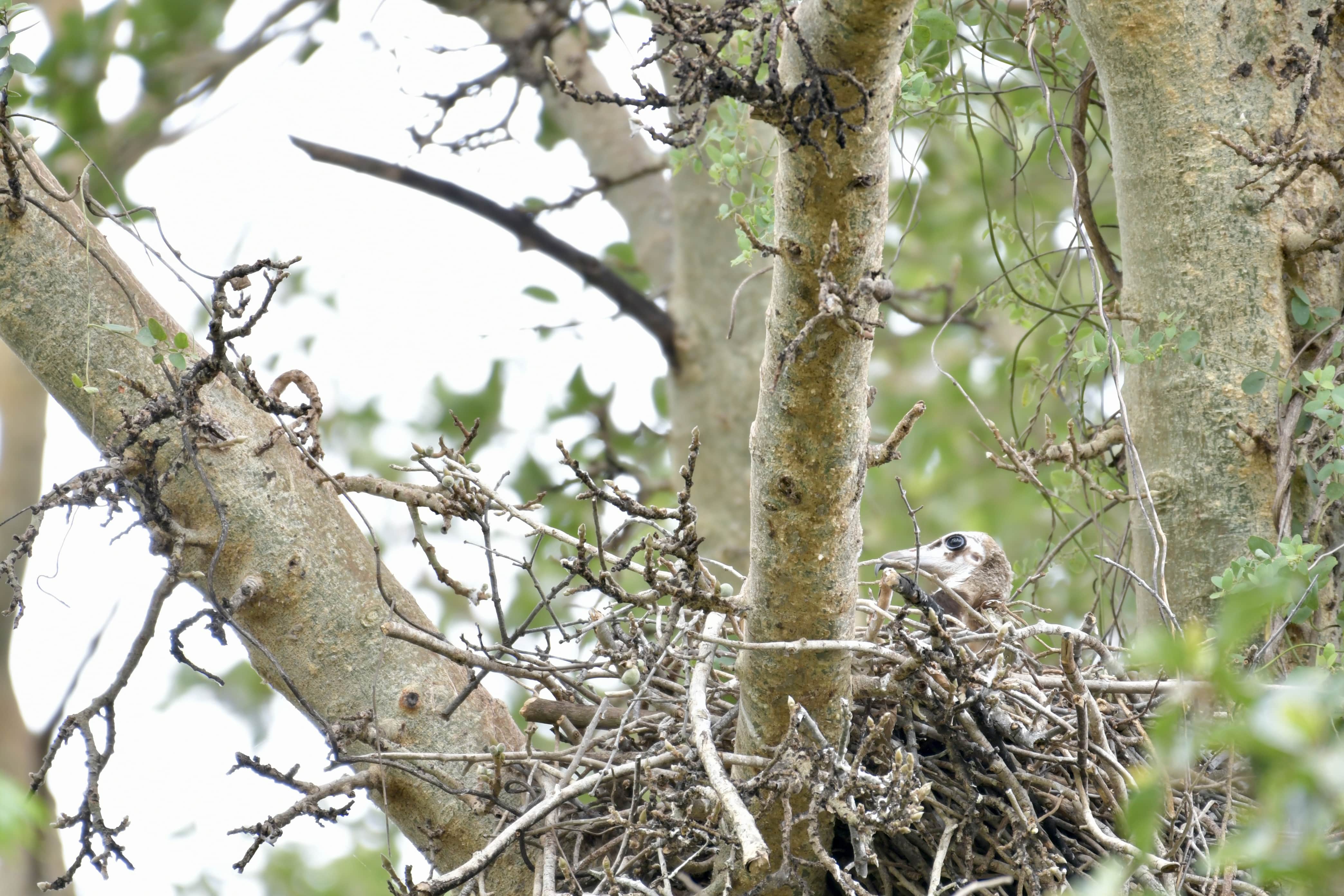Although successful, our October Zululand vulture tagging ended up being a rather average week in the end - with only 5 African White Backs and 3 Lappet-faced vulture fledglings tagged. This year, once again, there was absolutely no increase in nesting pairs, and from what we can tell, there seems to be a large number of unsuccessful nests this year. Hopefully the follow-up in November will give us some hope![caption id="attachment_11192" align="alignnone" width="864"]

Zululand Vulture Tagging 2015. Photo: Chris Kelly[/caption]We thought it might interest our readers to know how vulture tagging is carried out:
Zululand Vulture Tagging for Dummies
Step 1: Find a team consisting of conservationists, vulture experts and registered vulture ringers. This vulture conservation project often sees our conservation volunteers joining in on the action too!Step 2: Find a vulture and get to it using some sort of contraption that can get you 12 meters off the ground. Vulture chicks are are usually removed from the nest using a cherry picker.Step 3: Record and tag the vulture. Vulture chicks are tagged with patagial (wing) tags, which allow for valuable data collection in the conservation of these magnificent birds.Step 4: Put the vulture back on the nest.[caption id="attachment_11193" align="alignnone" width="863"]

Zululand Vulture Tagging 2015. Photo: Chris Kelly[/caption]
The Zululand Vulture Tagging Project
Wildlife ACT's annual Zululand vulture tagging efforts are done in partnership with Wildlife ACT Fund, Ezemvelo KZN Wildlife and the Endangered Wildlife Trust Birds of Prey Programme who have teamed up to assist the Zululand Vulture Project in ways to help save this important population in Zululand. The team hopes to tag as many chicks as possible over the next few years.The Zululand vulture tagging project aims to fit GPS units to both young and adult vultures. This is to help better understand the routes these birds are using, foraging areas, roosting spots, and also to determine the survival rate of youngsters.[caption id="attachment_6330" align="alignnone" width="1265"]

A vulture wearing a GPS/GSM backpack.[/caption]
Why Zululand Vultures are in Decline
These vulture nesting sites have been monitored since the late 1990s, but since 2001, the numbers have dropped substantially - almost 70% of breeding pairs have vanished. This can be associated directly to the recent surge in vulture poisoning. Carcasses are laced with poison after being dragged into an open area and are irresistible to the hungry birds above. In recent times vulture sightings are becoming more and more of a luxury - especially our tree-nesting species in the Zululand where the numbers are plummeting at a shocking rate.[caption id="attachment_6690" align="alignnone" width="1040"]

Carcasses of vultures poisoned in iMfolozi Game Reserve, November 2013.[/caption]
Why Vulture are Important
As scavengers, vultures are important members of ecosystems where they control disease outbreaks by keeping the veld clean of rotting carcasses. It can therefore be said that vultures, like hyenas, can be used to measure the functioning of the ecosystem. Zululand vulture tagging efforts are therefore essential.[caption id="attachment_8107" align="alignnone" width="1378"]

Zebra Ophathe after vultures.[/caption]
How to help our Zululand vultures
Thanks to Woolworths vulture bags we have managed to secure some funding to support this project, but we are in desperate need of more funding. The vulture GPS backpacks alone cost R6000, therefore any donation will be greatly welcome and used to preserve one of Africa’s most iconic birds.1. Donate now!2. Join Wildlife ACT as a Conservation / Wildlife Volunteer.





.jpg)



.jpg)
